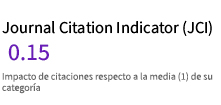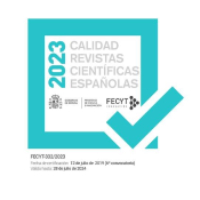Call for Papers / Llamada para recepción de propuestas: BOLETÍN DE ARTE n.º 40/2019: MONOGRÁFICO CONMEMORATIVO SOBRE ANIMALES E HISTORIA DEL ARTE
CFP: Boletín de Arte (n. 40/2019) - Special Commemorative Issue on Animals and Art History
(please, scroll down for English)
Boletín de Arte n 40/2019: Monográfico conmemorativo sobre Animales e Historia del Arte
Envío de artículos: 30 de noviembre, 2018 – 28 de febrero, 2019.
Idiomas aceptados: Español, Inglés, Francés e Italiano
Co-editoras del número monográfico: Reyes Escalera Pérez y Concepción Cortés Zulueta
Para ser aceptados para su consideración y evaluación por pares de doble ciego, los artículos deberán abordar el tema de Animales e Historia del Arte con un máximo de 31 500 caracteres (incluidos los espacios) y con un máximo de 10 imágenes. Las directrices para los autores se pueden consultar en la página web del Boletín:
http://www.revistas.uma.es/index.php/boletin-de-arte/about/submissions#authorGuidelines
Boletín de Arte, revista de acceso abierto editada por el Departamento de Historia del Arte de la Universidad de Málaga desde 1980, propone con motivo de su número 40 / 2019 un monográfico centrado en la representación, presencia y agencia de los animales no-humanos en la historia del arte y de la cultura visual.
Los humanos vivimos rodeados de animales a quienes con frecuencia ignoramos, o tendemos a sustituir por o filtrar mediante nuestros significados, percepción y simbolismos. Sin embargo, en las últimas décadas los animales han estado cada vez más presentes en las preocupaciones e intereses de nuestras sociedades a través no sólo de sus representaciones, sino como sujetos y agentes a cuyas perspectivas y necesidades habría que prestar atención. En paralelo, los estudios animales (animal studies o human-animal studies) los han recuperado y reivindicado como tema a investigar también por parte de las humanidades y ciencias sociales, y asimismo, de la historia del arte. Este enfoque transversal suele fijarse en la biología y demás disciplinas afines, interacciona con otros estudios de área (de género, poscoloniales, queer, etc.), y se refuerza y puede venir acompañado de marcos como el posthumanismo o la preocupación por el medio ambiente.
Este número monográfico de Boletín de Arte busca abordar esta temática de los animales no-humanos desde todos los periodos, metodologías y aproximaciones propias de la historia del arte.
Posibles líneas o ejes temáticos a tratar (entre otras posibilidades):
- Representaciones de animales (retratos, fotografías, ilustraciones científicas...).
- Biografías de animales históricos o artísticos.
- Emblemática y tratados sobre animales.
- Museos y animales, animales en el cubo blanco.
- Naturaleza y simbología de los animales.
- Géneros o tópicos artísticos sobre animales.
- Artistas y sus animales.
- Artistas que colaboran con otros animales.
- Animales como creadores o agentes artísticos.
- Cine y animales.
- Vídeos de animales en Internet.
- Animales, arte y género.
- Arte y activismo animalista.
- Arte ecológico y animales.
- Arte o diseños para otros animales.
- Animales y estética.
Nota: Las secciones de este número monográfico se limitarán a las de Contrastes, Artículos y Varia
Co-editoras del número monográfico: Reyes Escalera Pérez y Concepción Cortés Zulueta
Para cualquier duda o consulta:
Reyes Escalera: drescalera@uma.es
Concepción Cortés: ccorteszulueta@uma.es
English version:
Boletín de Arte n 40/2019: Special Thematic Issue: Animals and Art History
Submission of articles: November 30, 2018 - February 28, 2019.
Accepted languages: Spanish, English, French and Italian
Co-editors of the monographic issue: Reyes Escalera Pérez and Concepción Cortés Zulueta
In order to be accepted for consideration and double blind peer reviewed evaluation, the articles have to address the topic of Animals and Art History with a maximum of 31,500 characters (including spaces) and with no more than 10 images. Please, find detailed submission guidelines in the Boletín’s webpage, scroll down for the guidelines’ English version:
http://www.revistas.uma.es/index.php/boletin-de-arte/about/submissions#authorGuidelines
Boletín de Arte, an open access journal edited since 1980 by the Department of Art History, University of Málaga, proposes a special thematic issue commemorating its 40th anniversary. This special issue will focus on the representation, presence and agency of non-human animals in art history and visual culture.
As humans, we live surrounded by animals that we often ignore, or that we tend to substitute with or filter through our meanings, perceptions and symbolism. However, in recent decades animals have been increasingly present among the concerns and interests of our societies not just through their representations, but also as subjects and agents whose perspectives are worth considering. In parallel, animal studies (or human-animal studies) have reclaimed animals as a field of inquiry of the humanities and social sciences, including art history. This transversal approach is usually acquainted with biology and other related disciplines, interacts with other area studies (gender, postcolonial, queer, etc.), and is reinforced and may be accompanied by frameworks like posthumanism, or by environmental concerns.
This Animals and Art History issue of Boletín de Arte is open to address the subject of non-human animals from all periods, methodologies and approaches of art history.
Possible topics include, but are by no means limited to, the following:
- Representations of animals (portraits, photographs, scientific illustrations, etc.).
- Biographies of historical or artistic animals.
- Emblems and treaties on animals.
- Museums and animals, animals inside the white cube.
- Nature and symbology of animals.
- Artistic genres or topics about animals.
- Artists and their animals.
- Artists who collaborate with other animals.
- Animals as creators or artistic agents.
- Cinema and animals.
- Videos of animals on the Internet.
- Animals, art and gender.
- Animal activism and art
- Eco-art and animals.
- Art or designs for other animals.
- Animals and aesthetics.
Note: This CFP and special thematic issue only affects “Articles” and “Varia” sections, not the sections of “Book reviews” and “Exhibition criticism”).
For any queries contact Reyes Escalera ( drescalera@uma.es ); Concepción Cortés ( ccorteszulueta@uma.es )






4.png)
